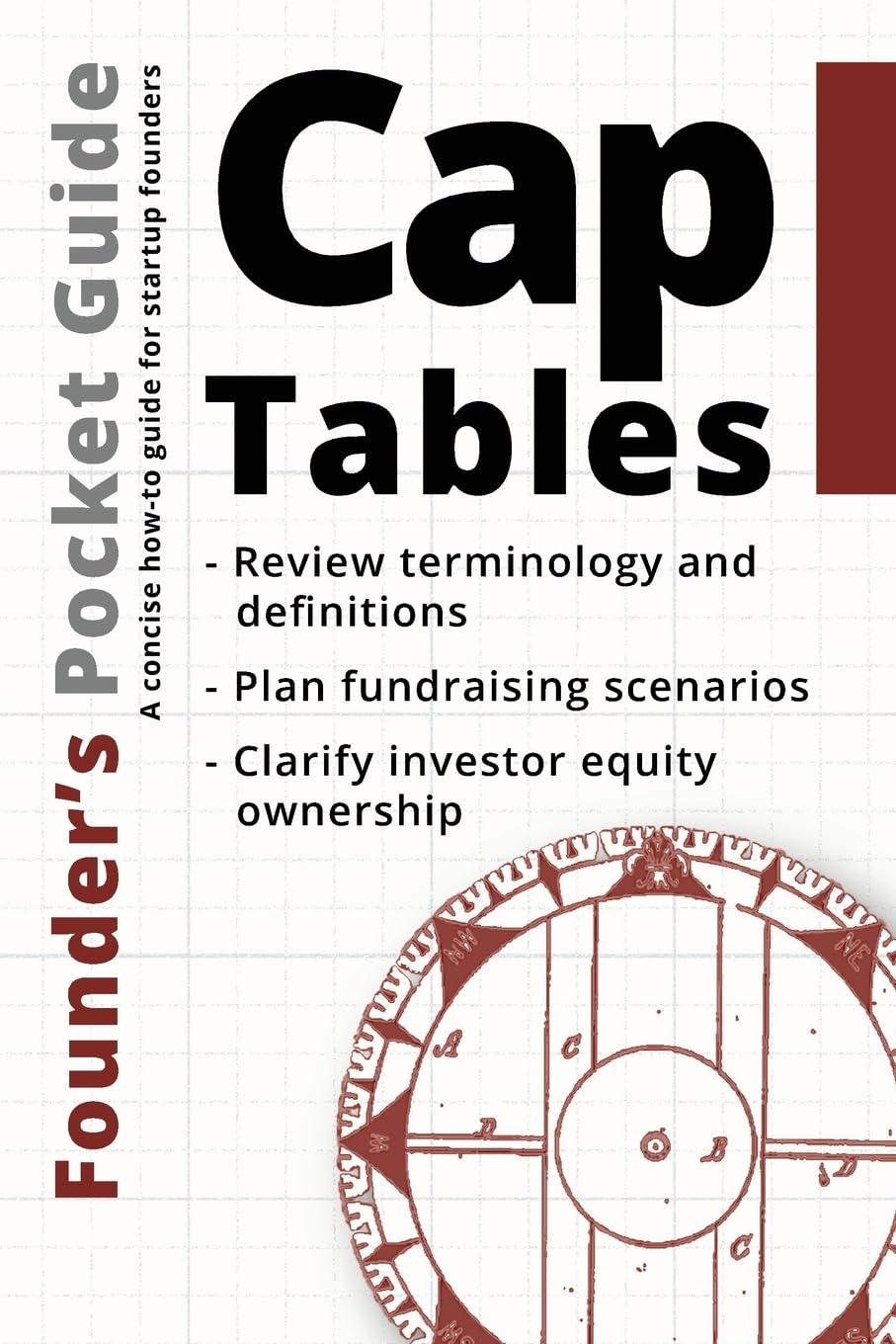Cap Table For Founders: Step-by-Step Guide
This Friday ->Founder’s Pocket Guide: Cap Tables by Stephen R. Poland [3 min reading]
On Startup Salad I break down a business book’s key takeaways in a simple, digestible format, just like a good salad!
Hey, it’s Fede!
Let’s say you’re working on a cool project. Everything’s going smoothly, and you’re ready to incorporate and raise some money.
Then, out of nowhere, someone asks you:
What about your Cap Table?
BOOM.
Are you prepared with an answer?
You need to have one, and it's best if you’re working on it correctly. Without it, even the greatest project could face BIG problems.
Today's book: Founder’s Pocket Guide: Cap Tables by Stephen R. Poland
Below, you’ll find the key definitions and formulas you need to know about the Cap Tables.
Let’s start!
Pssst: every time you see a🥗 it means the takeaway is very hot!
What’s a Cap Table?
A capitalization table (or cap table) is a document (usually an Excel sheet) that tracks a company's ownership distribution.
Seems simple, right?
In theory, yes, but many overlook it.
It’s crucial to set up your cap table early, even before bringing in investors. This allows you to clearly see the ownership breakdown between founders from the beginning.
IMPORTANT: the Cap Table is not static, it evolves as the company grows and changes with every funding round.
Let’s Break Down a Cap Table
If you'd like to download a great Cap Table template for free, you can find it here: Download Template. 🥗
Let me explain how it's structured:
The left side of the Cap Table:
This is the first part you need to fill in when starting a new project.
First, determine the type of shares (for founders, it’s usually common), the number of shares, and their price (I’ll explain how to calculate this in the next step).
The central part of the Cap Table:
It is dedicated to all the funding rounds and how the dilution of shares, valuation, and share price change with each round.
With every new funding round, you need to update this part of the Cap Table.
The right part of the Cap Table:
The third part allows you to calculate how much each shareholder would earn in the event of an exit. 🥗
How to Calculate the Price Per Share and Fully Diluted Stock Percentage
For a startup to succeed, it’s important to know how many shares have been distributed, their value, and what percentage of shares each shareholder owns.
Now, let’s look at how to calculate this before and during the first funding round (the method changes).
BEFORE THE FIRST FUNDING ROUND: 🥗
In the early stage phase, this can be tricky, as a nominal value often needs to be assigned.
The share price (the value of each share) is typically assigned a value of 1, 0.01, or 0.001 CHF.
The number of shares is usually set within a range between 1,000,000 and 10,000,000. Once assigned, the total number of shares represents the fully diluted stock percentage, which equals 100%.
For both, the values are assigned nominally.
DURING THE FIRST FUNDING ROUND: 🥗
To calculate the share price, you'll need to know:
The pre-money valuation of the startup (agreed upon with investors).
The value of the investment.
Then, simply divide the pre-money valuation by the number of shares.
2. Regarding the number of founders' shares, they generally remain unchanged. However, the percentage of fully diluted stock percentage for each shareholder will vary.
Here’s how to calculate it:
First, identify the total number of shares that existed before the round.
Take the total investment amount and divide it by the share price you calculated above. This will give you the number of shares created for investors.
Then, add the existing shares (before the round) to the new shares created for the investors (total post-round shares).
You can now calculate each shareholder’s shares. Simply take the number of shares the shareholder holds and divide it by the total number of shares you just calculated.
You can do some tests using the template: Download Template!
What’s the Option Pool?
An option pool is a portion of company ownership set aside for future employees (or advisors). Investors often ask for the option pool to be created or expanded before they invest (keep in mind, this will dilute the founder's share, not theirs).
The option pool is linked to the ESOP (Employee Stock Ownership Plan), which explains how the pool is shared, earned, and managed. While the option pool reserves equity, the ESOP makes sure these shares are used well to attract and keep employees. 🥗
Tip: Try to keep the option pool as small as possible, while still leaving room for new hires. A typical pool is around 15-25% of the company’s equity.
That’s it!
I hope you found it useful, let me know if I should have mentioned something else about this topic in the comments!
The guidelines you need to build your startup:
See you next Friday,
Federico Lorenzon










